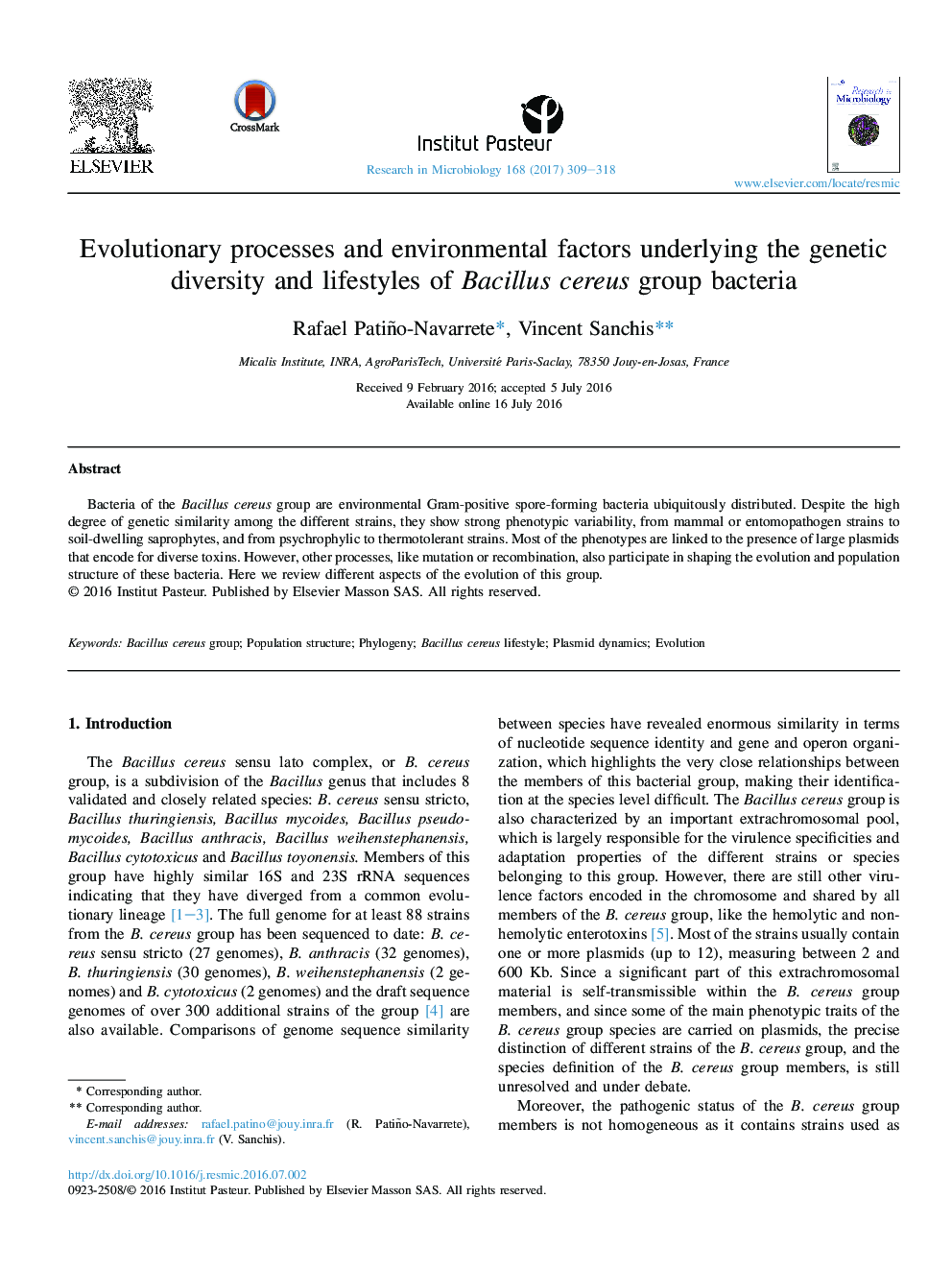| Article ID | Journal | Published Year | Pages | File Type |
|---|---|---|---|---|
| 5739777 | Research in Microbiology | 2017 | 10 Pages |
Abstract
Bacteria of the Bacillus cereus group are environmental Gram-positive spore-forming bacteria ubiquitously distributed. Despite the high degree of genetic similarity among the different strains, they show strong phenotypic variability, from mammal or entomopathogen strains to soil-dwelling saprophytes, and from psychrophylic to thermotolerant strains. Most of the phenotypes are linked to the presence of large plasmids that encode for diverse toxins. However, other processes, like mutation or recombination, also participate in shaping the evolution and population structure of these bacteria. Here we review different aspects of the evolution of this group.
Related Topics
Life Sciences
Immunology and Microbiology
Applied Microbiology and Biotechnology
Authors
Rafael Patiño-Navarrete, Vincent Sanchis,
